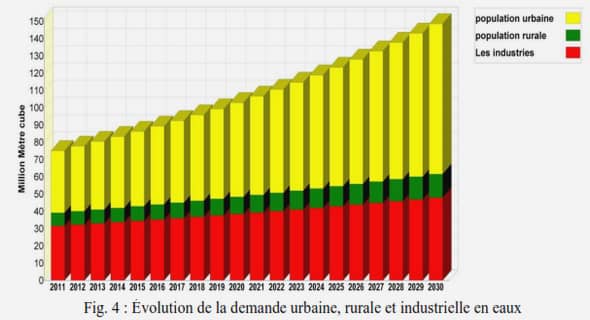Macrosegregation
The first examination of macrosegregation in steel ingots can be traced back to 1920s (Hultgren, 1929). Since then, although our understanding of segregation development process has considerably improved, the same macrosegregation patterns can still be observed in ingots produced today (Campbell, 2011). These, (Pickering, 2013), include positive top segregation (with the carbon content more intense than the nominal one at the top of the ingot), negative base segregation (with the solute concentration smaller than the nominal one at the bottom of the ingot) and solute-enriched channel segregations (A- and V-segregate bands). A-segregations, pointing towards the top of the casting, are located near the boundary between center and the periphery, while V segregations are visible in the central part of the casting.
All types of macrosegregation are derived from the same basic mechanism: movement or flow of segregated liquid with respect to the solid framework of the mushy zone during the solidification process.The movement of enriched liquid and depleted solid can occur through a number of processes :
i) Convective flows due to density gradients caused by temperature and composition variations in the liquid . The thermal and solutal convection contributions can either aid or oppose each other, depending on whether local temperature and concentration fields cause liquid density to increase or decrease. The convection due to the coupled action of temperature and solute is known as thermosolutal convection.
ii) Movement of small (equiaxed) grains or solid fragments, which have nucleated heterogeneously in the melt, become detached from the dendrites due to remelting/stress or have separated from the mold wall after pouring . Equiaxed grains in steels are denser than the surrounding liquid and will hence tend to sink. This mechanism, along with convective fluid flow, is a dominant macrosegregation process in large size ingots.
iii) Flow that feeds solidification shrinkage and thermal contraction of the liquid and solid during cooling .
iv) Deformation of the solid network in the mushy zone due to thermal stresses, shrinkage stresses and metallostatic head (i.e., the pressure provided by the liquid metal above) , or external forces on the solid shell (such as those from the rolls in continuous casting of steel).
v) Imposed flows due to pouring, motion of gas bubbles, vibration, applied electromagnetic fields, stirring, rotation etc.
In ingot casting of steels, the positive segregations dominantly result from the thermosolutal convective flow. The negatively segregated cone is caused by the sedimentation of the equiaxed crystals, formed early in the solidification process, owing to their own weight and a downward motion of liquid along the wall induced by thermal convection. The A-segregates are the results of solutal convection through the columnar dendritic zone in the same direction as, but at a faster speed than, the isotherm velocity. The V-segregates arise from equiaxed crystals settling in the core (Pickering, 2013) .
Measures to control macrosegregation
It has been found that the extent of segregation depends greatly on the degree of convection or diffusion in the liquid and solid, thus depending upon the cooling conditions in the solidification. Careful control of casting process parameters at the outset could therefore be the effective method to control the extent and intensity of macrosegregation. So far, intensive researches have been underway, and some critical process parameters have been identified and used as ‘countermeasures’ to produce sound ingots with improved quality and limited macrosegregations:
1) Control of alloy composition
Alloys, by definition, are always multicomponent. Different alloying elements can have opposite contributions to the density of the mixed melt, to the buoyancy force (i.e. the upward force exerted by a fluid that opposes the weight) and to the overall flow. As a result, they can affect the overall contribution of solutal convection (i.e. motion of fluid induced by composition variation) to the macrosegregation (Du, Eskin et Katgerman, 2007). Furthermore, different concentrations of alloying elements exert different effects on the partition coefficient k, (defined as the ratio of the solid composition to the liquid composition). That is, they affect its deviation from unity (no partitioning of solute elements between liquid and solid phases during solidification, and therefore no segregation) and whether it is less than or greater than 1 (determining the extent and pattern of macrosegregation). It has been reported that the A-segregation could be reduced by increasing molybdenum and decreasing silicon and manganese within the specified range (Suzuki et Taniguchi, 1981). The reduction was related to the stable density stratification (i.e. variations in density) in the solute-rich liquid, and the decreased and more neutral buoyancy at the temperature within the freezing zone.
2) Employment of multipouring technique
Multipouring technique refers to sequential pouring of molten steel from multiple ladles with different concentrations of alloying elements. Each ladle content, temperature, weight and flow rate are carefully controlled at optimum condition. The purpose is to build an initial delaminated concentration distribution (i.e. an initial disparate chemical distribution) for the solidification of steel ingots (Duan, Shen et Liu, 2015). It has been argued that the multipouring process is effective to suppress macrosegregation in large size steel ingots by reversing the initial concentration distribution in the top and the bottom section of the steel ingot before solidification starts (Tu, Shen et Liu, 2015).
INTRODUCTION |


